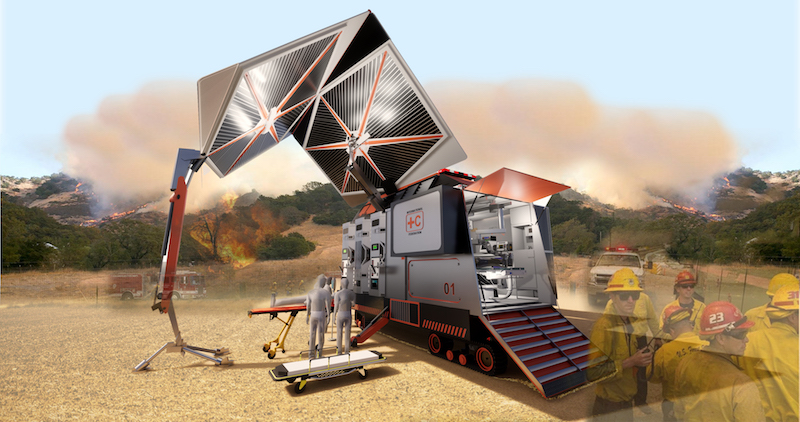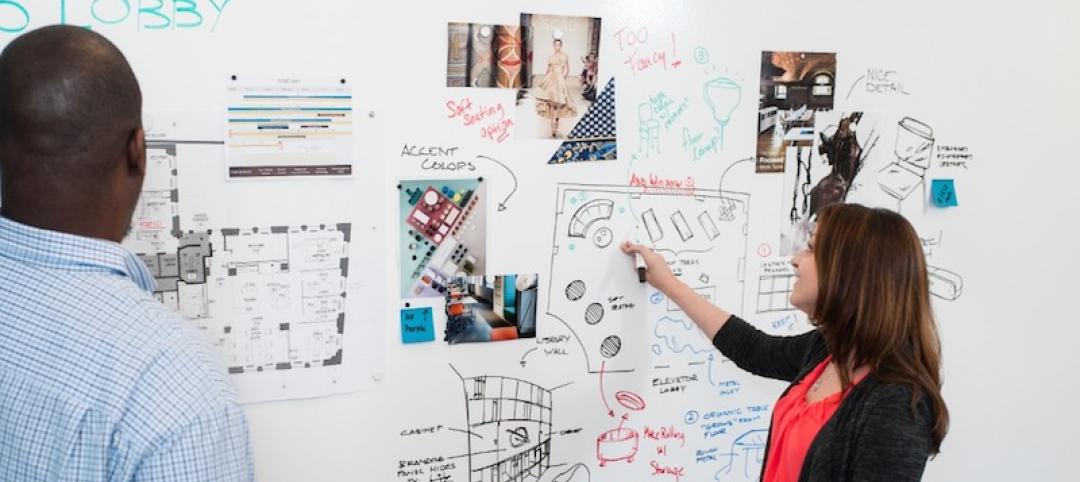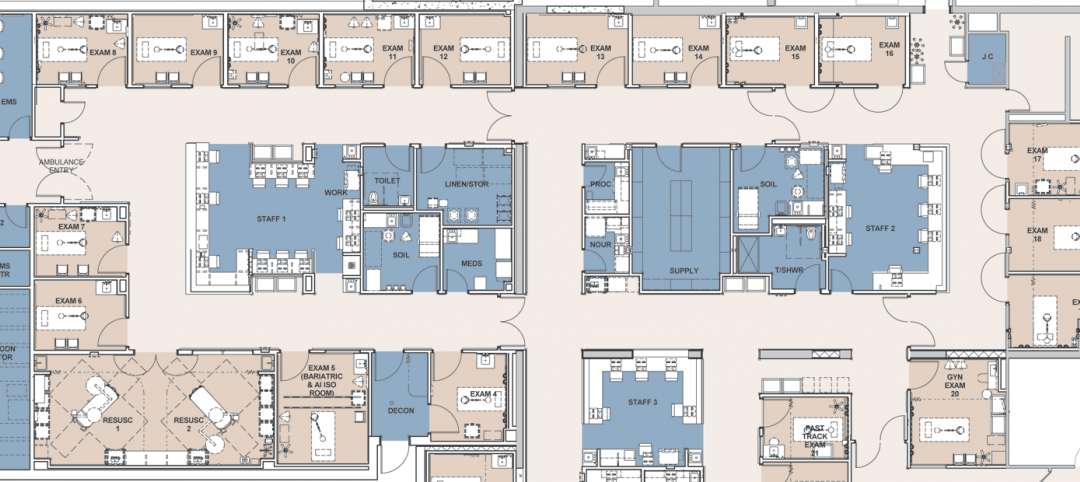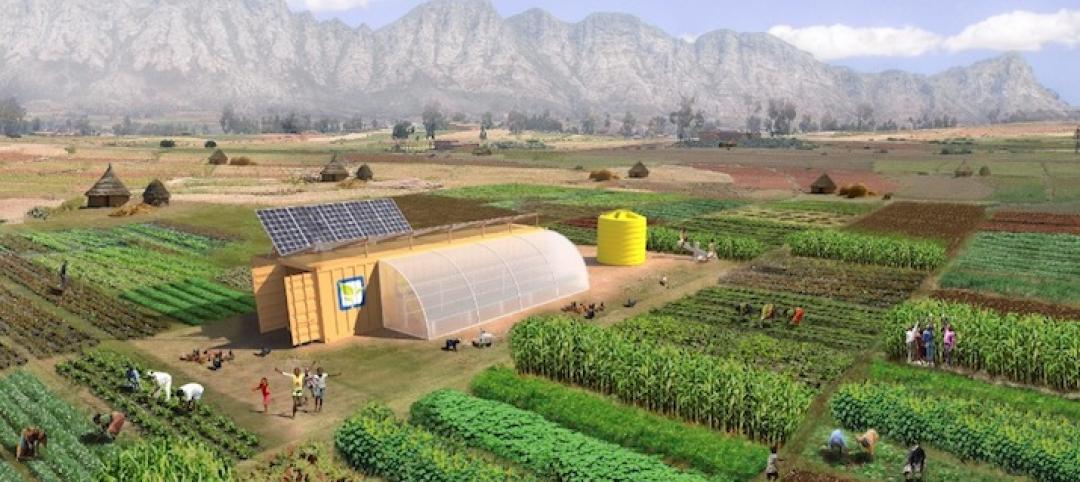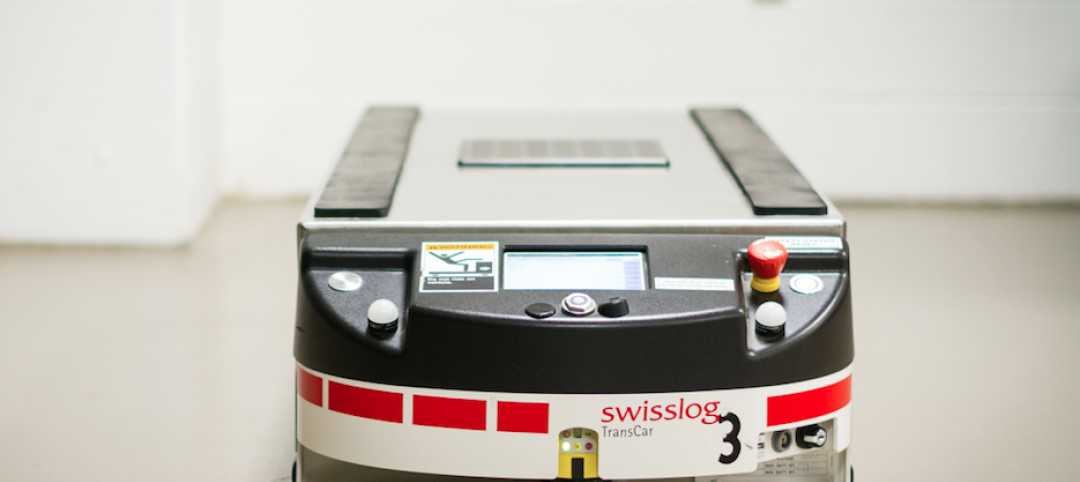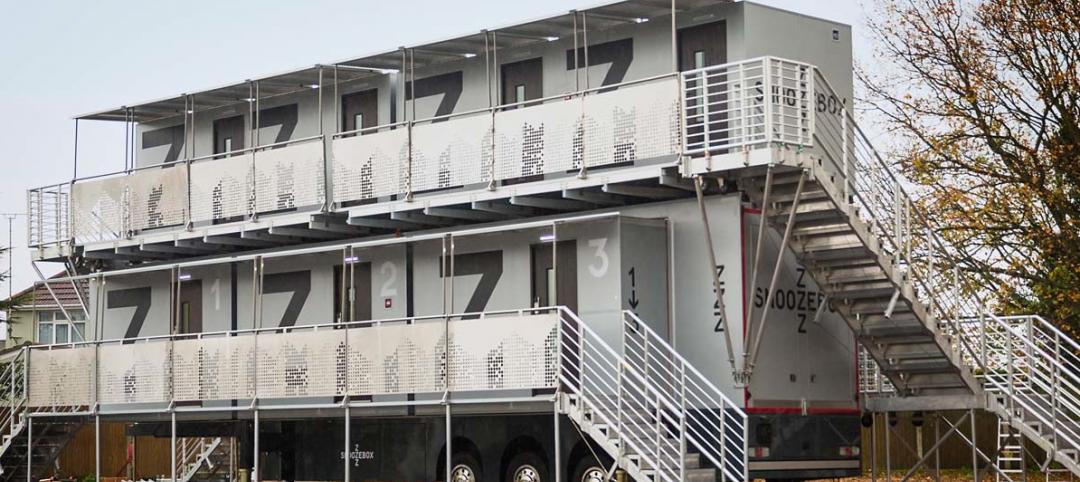In a medical emergency, the faster a patient receives attention, the better their prognosis becomes. Natural disasters such as hurricanes and floods can make transferring a patient to a hospital difficult. What if the hospital could come to the patient?
That question spurred the creation of the Medical Motherboard (MM), a modular, scalable mobile hospital that can adapt to multiple crises at any scale. Designed by CallisonRTKL, the MM combines artificial intelligence, advanced medical equipment, electric vehicle technology, and drones into one life-saving package.
See Also: Public canopy system can be reconfigured by drones on the fly
MM is built on a platform that acts as the backbone of the system. Based on electric vehicle technology and automobile platform concepts, the platform houses the power bank, telecommunications equipment, computer systems, and support infrastructure that allow the modules to plug and play on its surface. A spine rises from the platform and contains water filtration and docking stations for minor modules.
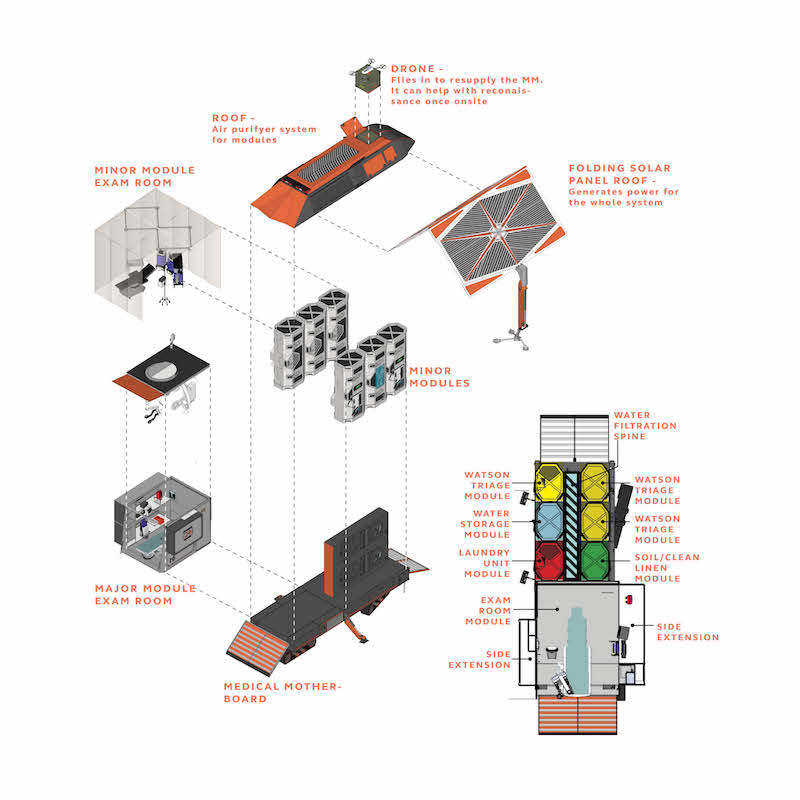 Courtesy CallisonRTKL.
Courtesy CallisonRTKL.
Minor modules act as the support services to the major modules (more on those later). They consist of services like registration and triage kiosks; water collection, purification, and storage; power supply; supply storage; equipment storage; and a drone-assisted resupply station. The registration and triage modules are equipped with AI that asks victims questions and helps first responders interview and classify them in terms of urgency. AI can then call for help or direct victims to the appropriate major module for further care. The major modules are medical care facilities like exam rooms, imaging suites, and operation rooms. The combined module space for each MM is 8x24 feet; side extensions can be attached.
The modules can be mixed and matched to best suit the situation. Once the appropriate modules are selected, they are moved onto the platform and locked into place. The onboard MM computer will then identify, catalogue, and connect the modules into a single network.
The MM is then towed on site like a technology packed camper trailer. Hydraulic stabilizer legs and a folding solar roof panel deploy to complete the set up. A rooftop air purifier system begins to ventilate the major modules.
In the event of a large-scale disaster, groups of MMs can be deployed together with complementary modules to create an entire mobile hospital.
Related Stories
Great Solutions | Jan 7, 2016
Bacteria-killing paint and magnetic wallcovering highlight innovations in surface materials
Sherwin-Williams recently introduced Paint Shield, the first EPA-registered microbicidal paint that kills virtually all infection-causing bacteria after two hours of exposure on painted surfaces.
Great Solutions | Jan 6, 2016
Shepley Bulfinch develops elegant design solution to address behavioral issues in emergency departments
ED scheme allows staff to isolate unruly patients and visitors in a secure area.
Great Solutions | Jan 6, 2016
All-encompassing farming kit can provide communities with a sustainable food supply
Several manufacturers partnered with the group Farm from a Box to develop an off-the-grid farming solution for communities, all without the need for outside help.
Great Solutions | Jan 4, 2016
Toronto’s newest hospital employs 10 robots for moving food, supplies, and equipment
The 1.8 million-sf Humber River Hospital is loaded with high-tech gadgets. Its coolest innovation is the use of automated guided vehicles.
Great Solutions | Jan 4, 2016
Snoozebox’s portable hotel rooms make outside events more livable
Since 2011, the London-based company has thrived by creating portable hotels that are set up for the duration of open-air events (or longer), and offer many of the comforts of conventional hotels.


